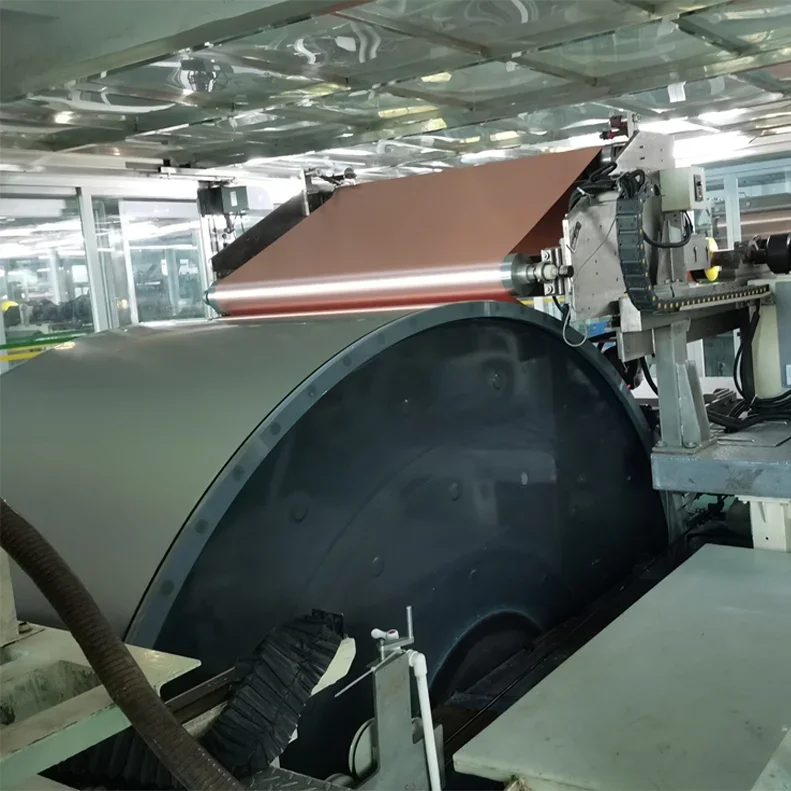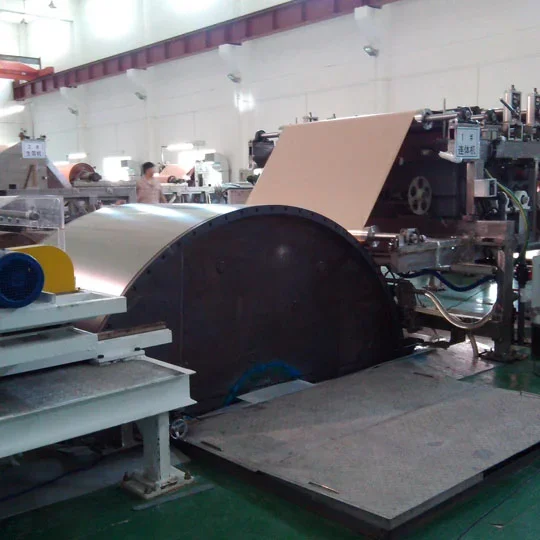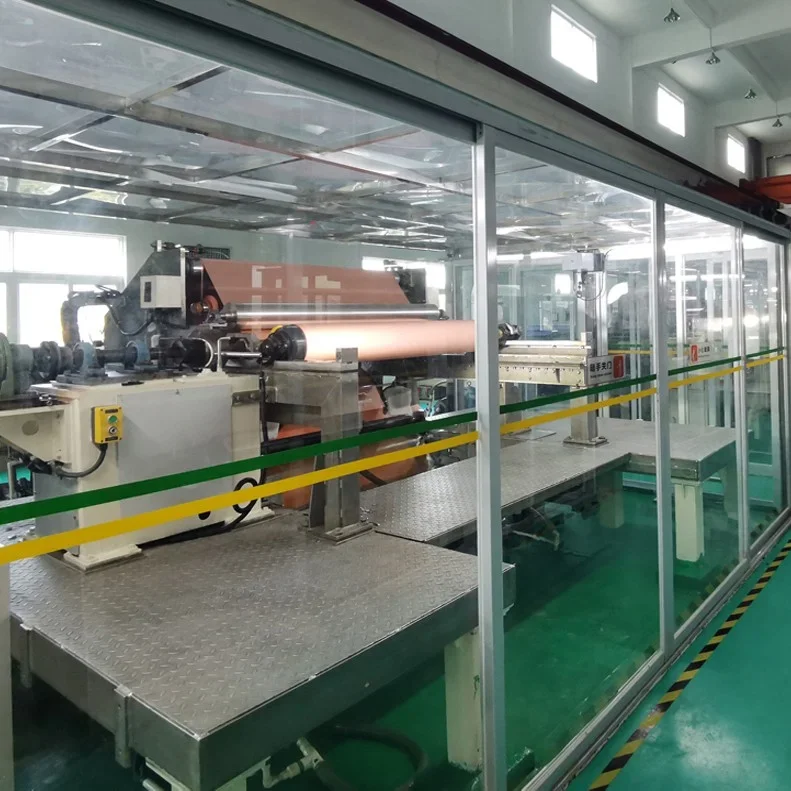Working Principle And Optimization Strategy of Electrolytic Copper Foil Equipment
Electrolytic copper foil, a thin sheet of copper used extensively in electronic and electrical applications, plays a crucial role in the production of batteries, printed circuit boards (PCBs), and various other electronic components. It is produced through an electrolytic process in which copper is deposited onto a conductive surface, creating a thin, flexible copper layer. The equipment used for this process, known as electrolytic copper foil equipment, operates on precise principles of electrochemical reactions, and optimizing its performance is essential for producing high-quality foils efficiently.
In this blog, we will explore the working principle of electrolytic copper foil equipment, its key components, and the strategies used for optimizing its operation to achieve higher yield, quality, and cost-effectiveness.
1. Understanding the Electrolytic Copper Foil Production Process
The production of electrolytic copper foil involves the process of electrolysis, where copper is electrochemically deposited onto a substrate, usually a rotating cathode, from an electrolyte solution containing copper salts. The copper foil produced in this way is typically used in the manufacturing of high-end electronic components due to its excellent electrical conductivity, malleability, and corrosion resistance.

Key Stages in the Electrolytic Copper Foil Process
-
Preparation of Electrolyte Solution:The process begins by preparing an electrolyte solution that contains copper sulfate (CuSO₄) and sulfuric acid (H₂SO₄). The solution also includes other additives that help control the properties of the copper foil, such as its surface texture and thickness. The electrolyte’s temperature, pH, and chemical composition are critical parameters that influence the quality of the final product.
-
Electrolysis Process:During the electrolysis stage, the electrolyte solution is passed through an electrolytic cell, which consists of a cathode (the copper foil substrate) and an anode (usually made of pure copper). When an electric current is passed through the solution, copper ions from the electrolyte are reduced and deposited onto the cathode, forming a thin copper layer. The thickness of the foil is controlled by adjusting the current density, the bath composition, and the plating time.
-
Post-Processing:After the copper foil is deposited, it undergoes a series of post-processing steps such as washing, drying, and heat treatment to enhance its mechanical properties and electrical conductivity. The foil is then wound onto rolls, ready for further processing in applications like PCB manufacturing or battery production.
2. Components of Electrolytic Copper Foil Equipment
The efficiency and effectiveness of the electrolytic copper foil production process heavily depend on the equipment used. Here are the key components of electrolytic copper foil equipment:
-
Electrolytic Cell:The electrolytic cell is the heart of the copper foil production process. It consists of two electrodes: the anode (usually a copper sheet) and the cathode (which is the substrate for the foil). The cell also holds the electrolyte solution in which copper ions are dissolved and undergo electrochemical reactions.
-
Power Supply:The power supply is crucial for controlling the voltage and current used in the electrolysis process. It ensures that the correct amount of energy is supplied to the electrolytic cell to deposit copper at a consistent rate, producing uniform foil thickness.
-
Cathode Reel:The cathode reel, where the copper foil is deposited, is a rotating drum or plate that collects the copper as it is electrochemically deposited. The rotation ensures an even distribution of the copper across the surface of the cathode.
-
Anode Basket:The anode basket holds the anodes in place within the electrolytic cell. The anodes provide the copper ions necessary for the electrochemical reaction to occur. As the electrolysis process continues, the anodes dissolve, releasing copper ions into the electrolyte solution.
-
Circulation System:A circulation system helps to maintain the flow of the electrolyte solution, ensuring that the copper ions are evenly distributed throughout the electrolytic cell. This system is critical for maintaining stable electrolyte conditions and preventing the formation of uneven deposits on the cathode.
-
Temperature Control System:Maintaining the optimal temperature is vital for ensuring consistent electroplating. Copper foil production typically requires precise control over the electrolyte temperature to prevent the formation of defects like pitting or excessive roughness on the foil surface.
3. Factors Influencing the Quality of Electrolytic Copper Foil
Several factors can impact the quality of the copper foil produced in the electrolytic process. Understanding these factors is essential for improving the performance of electrolytic copper foil equipment.
Current Density and Voltage:
The current density (the amount of electric current passing through the electrolyte per unit area of the cathode) directly influences the quality of the copper foil. Higher current densities tend to produce thicker copper foils, while lower current densities result in finer, smoother foils. The voltage applied across the electrodes also plays a role in controlling the deposition rate and the uniformity of the copper foil.
Electrolyte Composition:
The concentration of copper sulfate, sulfuric acid, and other additives in the electrolyte solution affects the structure and properties of the copper foil. For example, the addition of certain chemicals can help improve the surface quality of the foil or increase its adhesion strength. Variations in the electrolyte’s chemical composition can lead to defects like uneven deposition or poor adhesion of the foil.
Temperature and pH Control:
Temperature and pH control are critical for maintaining stable electrolytic conditions. The temperature of the electrolyte influences the rate of copper deposition and the smoothness of the foil’s surface. Similarly, the pH of the electrolyte affects the copper’s solubility and the overall electroplating process. Maintaining optimal temperature and pH levels ensures uniform foil thickness and high-quality deposits.
4. Optimization Strategies for Electrolytic Copper Foil Equipment

Optimizing electrolytic copper foil equipment is essential for increasing production efficiency, reducing energy consumption, and improving the quality of the final product. Below are some of the most effective strategies for optimizing the operation of electrolytic copper foil equipment:
1. Process Control and Automation:
Implementing advanced process control systems and automation can help maintain consistent operating conditions in the electrolytic copper foil production process. By monitoring parameters like current density, electrolyte temperature, and pH in real-time, automated systems can adjust settings to maintain optimal conditions, ensuring uniform foil quality and reducing the risk of defects.
2. High-Efficiency Power Supply:
Using energy-efficient power supplies can significantly reduce the energy consumption of the electrolysis process. Modern power supplies that use pulsed or variable current techniques can improve the efficiency of copper deposition, enhance foil quality, and reduce energy waste.
3. Advanced Additive Control:
Precise control over the additives in the electrolyte solution is critical for optimizing the surface properties of the copper foil. Additives such as brighteners, leveling agents, and grain refiners can improve the smoothness, strength, and conductivity of the foil. Using advanced sensors and monitoring systems to maintain the ideal concentration of these additives can significantly improve the overall quality of the product.
4. Continuous Monitoring and Feedback Loops:
Integrating continuous monitoring systems into the electrolytic copper foil equipment allows for real-time feedback on process variables. This enables operators to make timely adjustments to maintain optimal operating conditions, improving both the efficiency and consistency of the production process.
5. Maintenance and Equipment Upkeep:
Regular maintenance of the electrolytic copper foil equipment is crucial for preventing breakdowns and ensuring consistent operation. Proper maintenance includes cleaning and replacing worn-out components, calibrating sensors, and inspecting the power supply and circulation systems. Preventive maintenance practices help extend the lifespan of the equipment and maintain production quality over time.

5. Conclusion
Electrolytic copper foil production is a complex and highly sensitive process that requires precise control over various parameters to ensure high-quality output. The equipment used in this process, including electrolytic cells, power supplies, and temperature control systems, plays a vital role in determining the final product’s quality. By understanding the working principles of this equipment and implementing optimization strategies, manufacturers can improve production efficiency, reduce costs, and produce superior copper foil for a wide range of applications. Through process control, automation, energy-efficient technologies, and regular maintenance, the performance of electrolytic copper foil equipment can be significantly enhanced, meeting the growing demand for high-performance materials in the electronics and battery industries.
Timonic (Suzhou) Technology Co., Ltd ( Timonic ), a subsidiary of China Special Metal Group Limited (CSM), we commit to the development and production of new energy lithium battery material production equipment: lithium battery copper foil foil machine, cathode roll, especially focusing on providing one-station for high-quality lithium battery copper foil plant design scheme, mechanical and electrical intelligent equipment, software and hardware systems and automation equipment customization and complete sets and technical services.
Welcome to inquiry if you need to know more about electrolytic copper foil equipment details or order wholesale.



